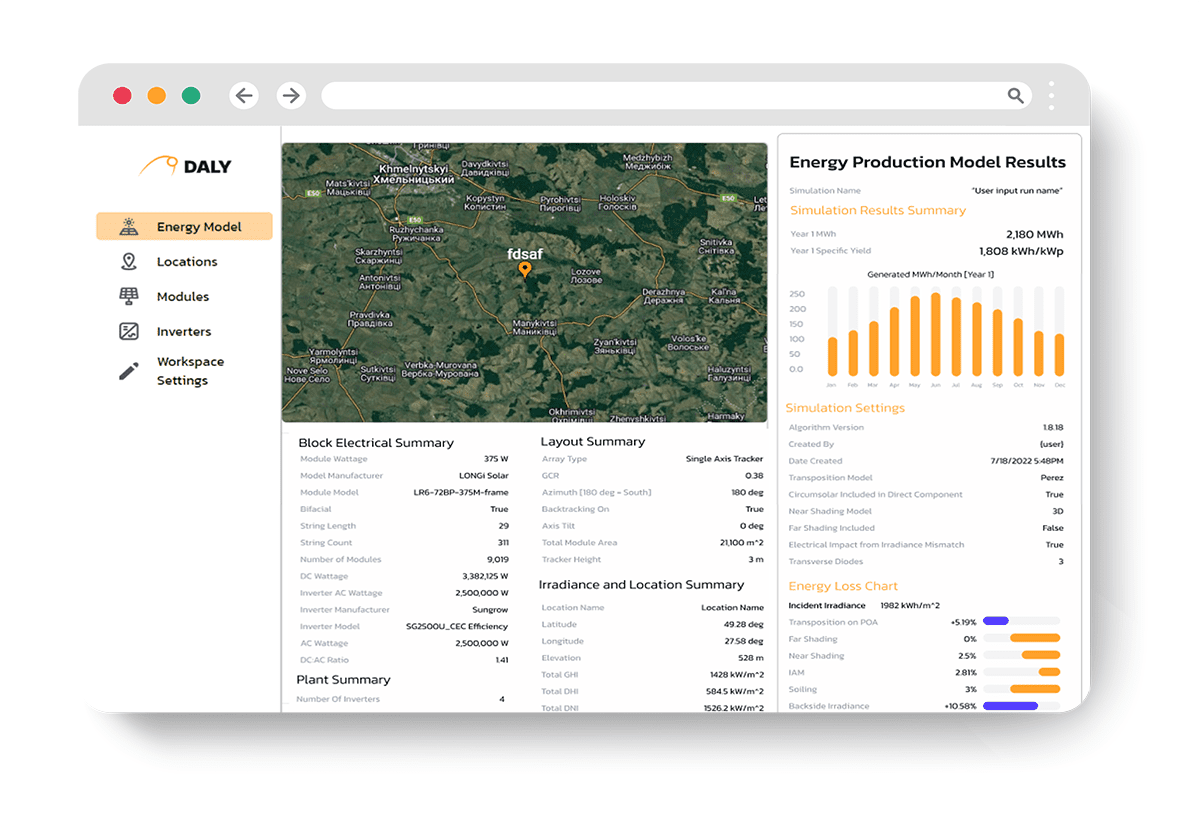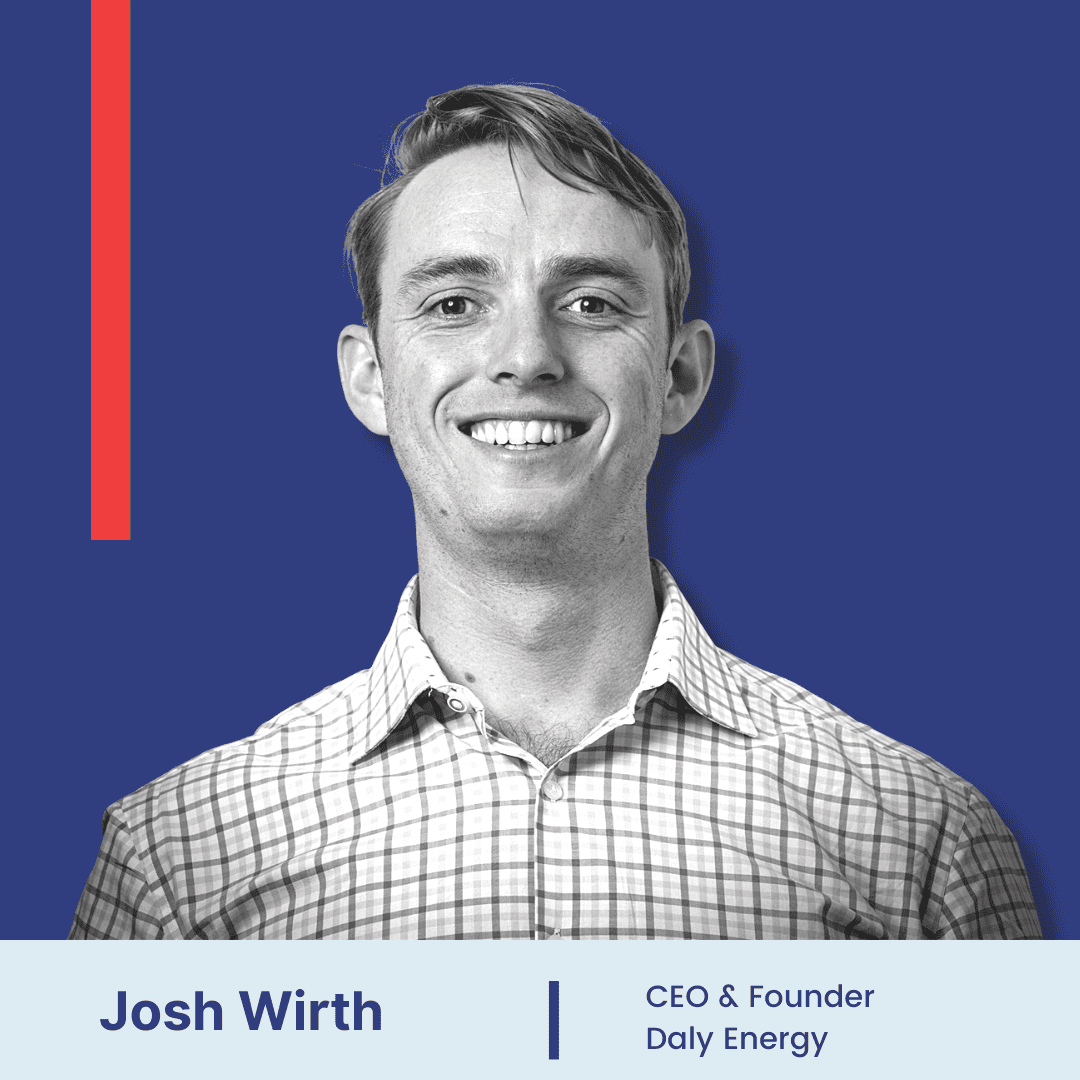Josh Wirth, founder of Daly Energy, saw a need for a better solar modeling process. His solution is a game-changer for the industry.
Similar to financing a commercial building, solar developers estimate the cash flow of their systems and use those estimates for financing.
To do this, solar developers use a tool called PVSYST (pronounced: “Pee Vee Syst”). PVSYST estimates how much energy a solar system will generate over its lifetime given the weather, soiling from pollution and dust, physical longitude, etc. From there, the developer builds an economic model based on those estimates.
“PVSYST is basically universally used,” says Josh Wirth, founder of Daly Energy. “However, there are some limitations. The software is about 30 years old, desktop-based, and unable to be automated.”
In other words, PVSYST provides the standard that banks need, but without the functionality that solar developers and operators desire. It’s clunky and hard to use. Unfortunately, it’s also the industry standard.
Josh thought he could do better.
Here, in an interview with King Energy CEO John Witchel, Josh walks us through the short history of solar production modeling and financing, the problems it causes for solar operators, and the potential for a better way forward.
A thorough solar career revealed a constant need
Josh, a civil engineering graduate, never intended to get into solar but ended up designing rooftop attachments for a small racking company, Zilla Corporation. He soon headed their engineering department before moving on to build a PV simulator for Solar City.
“That was the kernel that started Daly,” he says.
In the meantime, Josh also worked as an engineer, analyst, and product manager with Zep Solar, Tesla, Intersect Power, and Ojjo, Inc. Throughout his career, he continually encountered a need for a user-friendly energy yield modeling software to replace or supplement PVSYST, which was a pain point for their operations.
“A lot of developers have built their own tools,” Josh acknowledges, “and it’s technically challenging. You can get lost in the weeds pretty easily and have four or five software engineers working for several years to come to an uncertain outcome. But at the end of the day, there’s a real need for a well-managed, scalable, and fast energy yield modeling software. So, I finally decided this was something I should take a shot on.”
This led him to start his own company, Daly.
PVSYST’s emergence as the dominant model
Why is PVSYST the go-to standard despite being cumbersome and inefficient for solar operators? Because it was there at the start.
Germany’s solar boom in 2008-2009 led to a need for energy yield modeling software to calculate how much energy a solar installation will produce. Amongst several competing software solutions, PVSYST emerged as the victor.
By the 2010s when the US solar boom started, banks began asking how best to evaluate expected energy generation. Looking to Europe for precedent, independent engineers in the US eventually settled on using PVSYST because of its modeling sophistication and acceptance amongst financing institutions.
“So from that point on, roughly 2012, PVSYST has been used to finance all the gigawatts of commercial and utility scale solar,” Josh says. “We’ve basically been running with this as the default program for about ten years now.”
The stagnant state of production modeling
“We as an industry have accepted these outcomes,” Josh says of PVSYST’s universality. Yet despite widespread underperformance due to the consultant’s ability to overestimate production, PVSYST remains the universal standard in the solar industry. (For more, check out the 2022 Solar Risk Assessment from kWh Analytics.)
The issue is not just that other companies have emerged with energy yield modeling solutions that claim to be better, but that PVSYST’s dominance in financing has led to stagnation in the industry.
Banks are comfortable with PVSYST, so it endures. Even if developers approach a lender with another set of credible data, the lender would ask for PVSYST numbers as well.
“PVSYST is such a common pain point in production modeling and it’s frustrating to explain why this software is still the only option available. You’re either doing it with PVSYST or you’re doing it in some unsatisfactory way, where you’re having to adjust whatever numbers are coming out to make it work,” adds Josh.
A breakthrough way to advance solar modeling
Due to the dependency of solar financing on PVSYST, production modeling has remained stagnant even though solar technology has evolved rapidly in the last decade. To address this, Josh decided to build a better program that still meets the standards of the banks.
With Daly Energy, he completely rebuilt the financible model chain in a web-based platform, making it more efficient and user-friendly.
“We’re taking those financeable models and we’re putting them behind a better software platform,” Josh explains. “We’re expanding the capabilities, adding APIs and automation to it, on a web-based interface.”

“We’re taking those financeable models and we’re putting them behind a better software platform,” Josh explains. “We’re expanding the capabilities, adding APIs and automation to it, on a web-based interface.”
For large-scale solar sites, PVSYST involves a lot of simplification tied to computation limitations of a desktop-based manual application. Developers used to have to run it manually, taking 15-20 minutes per run, or use an in-house tool with results that varied several percent from PVSYST, making them unusable at the bank.
Daly’s fully automatable, cloud-based solution enables developers to run yield modeling much more quickly, at as many locations as desired, with results identical to what PVSYST would have produced. It also offers advanced 3D modeling that was previously missing from the space, and integration with other commercial software applications at different stages of the project lifecycle.
“We have a dual mandate of improving and simplifying the software experience, and then expanding it,” Josh says.

“We have a dual mandate of improving and simplifying the software experience, and then expanding it,” Josh says.
Supporting solar operators for the long haul
Josh Wirth and Daly Energy have made a significant impact in the solar industry. Despite the limitations imposed by solar financing, Josh has successfully developed a new program that improves upon the widely accepted PVSYST while still adhering to its principles.
“The way things are done is not necessarily the best,” Josh says. “There’s a difficult path to walk here. We’re trying to agree with the general accepted philosophy, and also improve upon it. Every advancement we make has to follow the original PVSYST line of thinking. How do we branch off of that and maintain scientific integrity?”
His ability to advance within these confines is a testament to his expertise and creativity. As our own King Energy CEO notes, “Josh Wirth and Daly Energy are part of a larger wave of tooling for people who are going to own and operate these systems for the long haul.”
